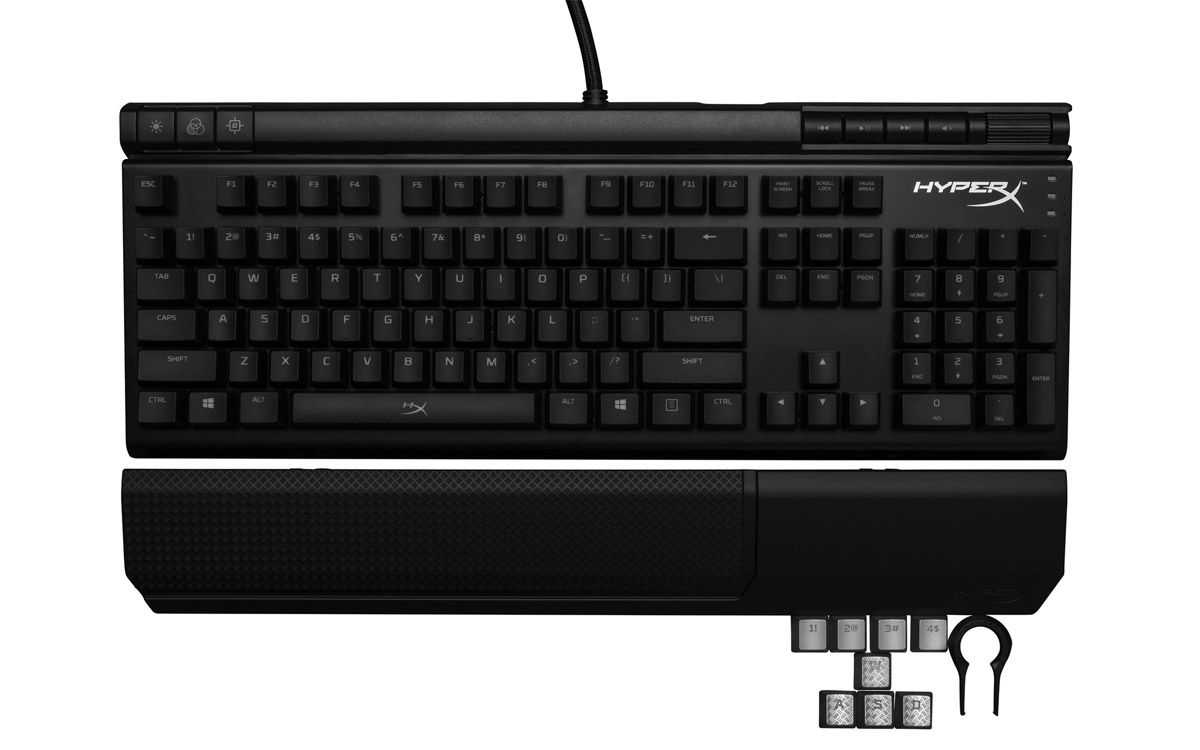
The keyboard feature panel has dedicated buttons for LED brightness, LED mode (which cycles between the six aforementioned backlighting modes), and Game Mode. These were all available on the Alloy, but now we get dedicated buttons for them rather than using key combinations. Though convenient, I won’t be making too much use of the dedicated LED brightness and LED mode buttons, since I generally just find the setting I like and stick with it. The dedicated Game Mode button, though, I absolutely approve it. Game Mode is simply a toggle to disable the Windows button so you don’t accidentally mash it in the middle of the game and ruin everything. It’s insanely smart and had I been in possession of it before the Alloy, I would have saved myself a lot of tears. There were two issues I had with it on the original Alloy, however: the keyboard couldn’t save the setting when it was powered off and I’d often have to use the dual key command twice (SHIFT F12) to turn Game Mode on correctly. The Alloy Elite resolves both issues and I couldn’t be happier about that.
When directly comparing the two keyboards, the Alloy has the edge for portability since the Alloy Elite doesn’t come with a travel bag and it’s a bit bigger, even without the wrist rest. If portability isn’t a concern, however, then the Alloy Elite wins out for its slightly expanded and slightly improved features (media and keyboard feature panels, wrist rest, and my personal favorite: improved Game Mode functionality). If you have the Alloy, should you upgrade to the Elite? I’d say in most cases, probably not with the exception being if you really NEED a media control panel on your keyboard. The Alloy Elite is very similar to the Alloy, and they provide very similar experiences. If you don’t have either and wanted to buy one, I’d recommend going for the Alloy Elite. The announced retail price of the Alloy Elite is $110 (compare this with the current price of the Alloy at $100), and the slight improvements are worth this rather small price increase.
Abbreviated Specifications
Dimensions:Connection type
- Width 444.00mm
- Depth 226.80mm
- Height 36.30mm
- Weight (Keyboard and cable) 1467g
OS compatibility
- USB 2.0 (2 USB connectors)
- Windows® 10, 8.1, 8, 7
The bottom line here is the the Alloy Elite is an exceptional mechanical keyboard, which is only to be expected since it’s so similar to the phenomenal Alloy. The Alloy Elite is exceedingly responsive, well-constructed, and still reasonably compact, even with the wrist rest attached. Provided its pricing is comparable to the Alloy, I highly recommend it to PC gamers who want excellent performance, a durable structure, and minimalist features for a reasonable price.
